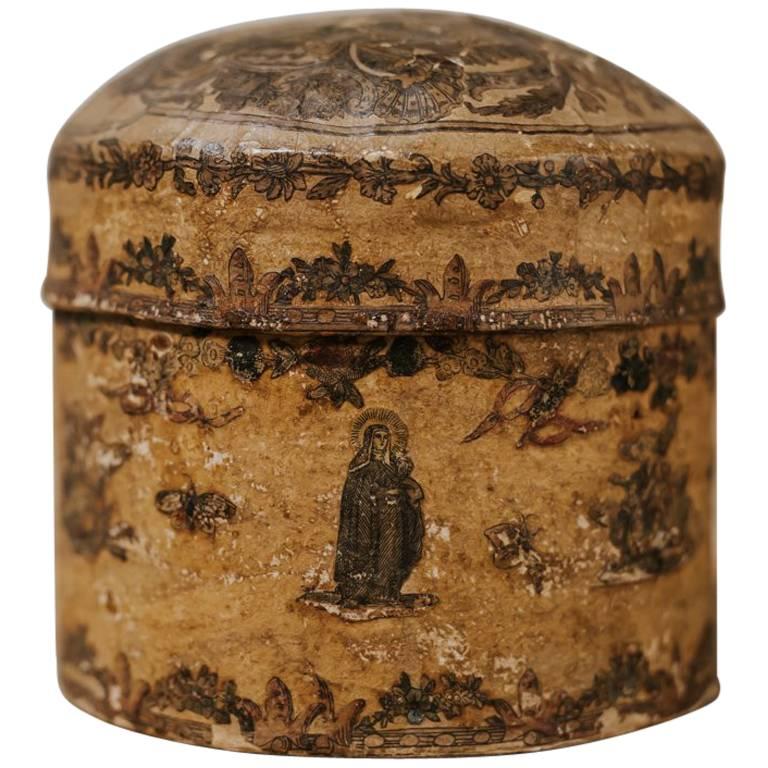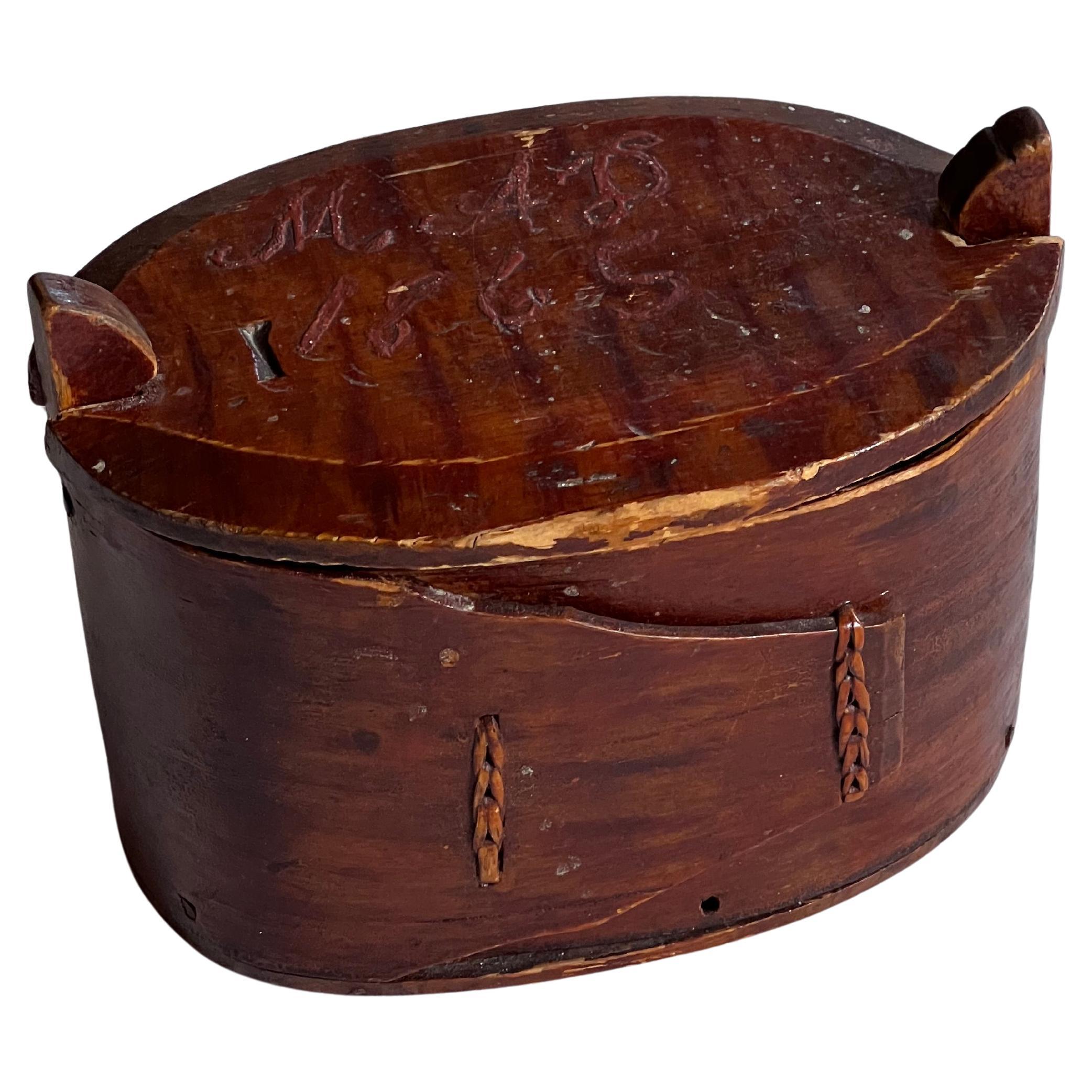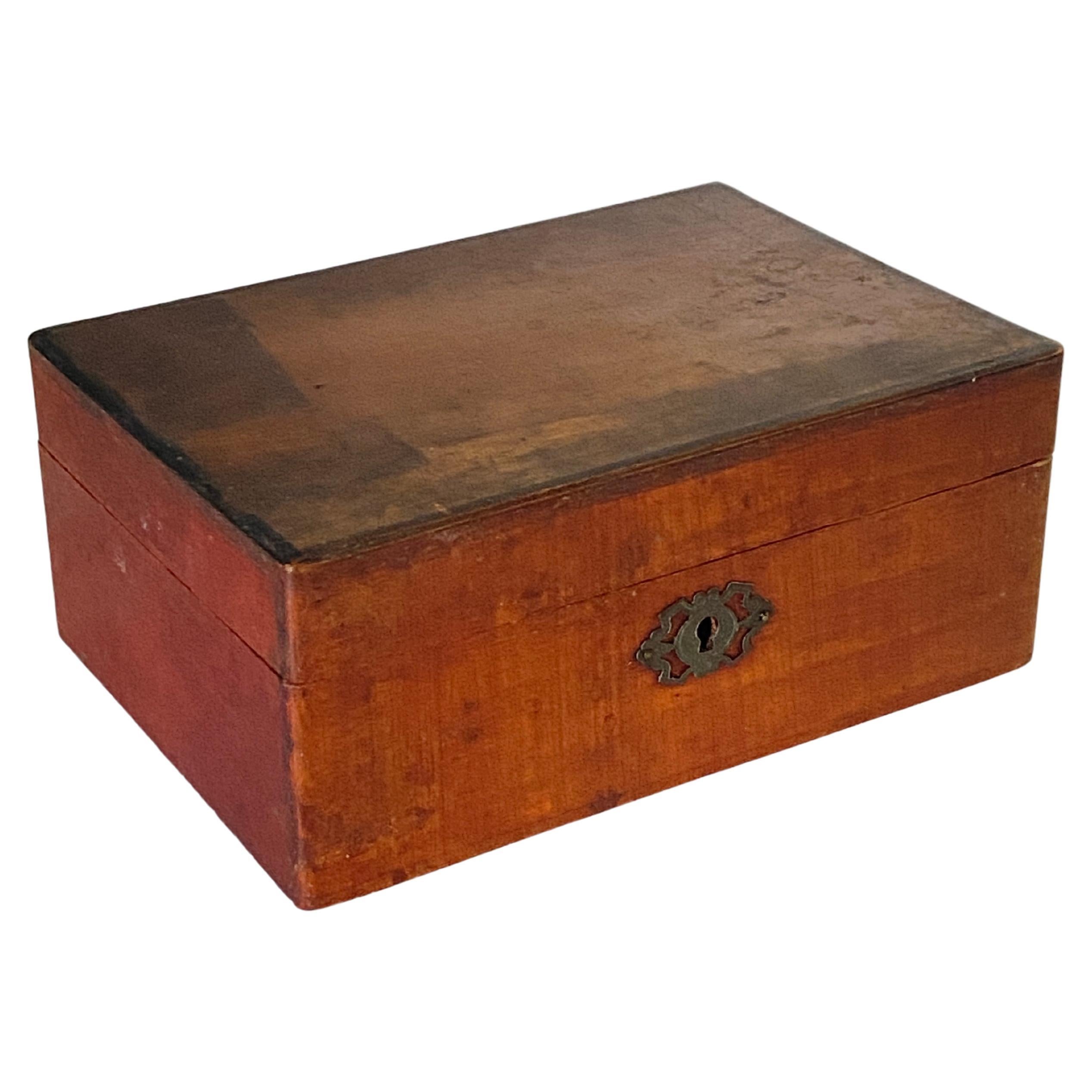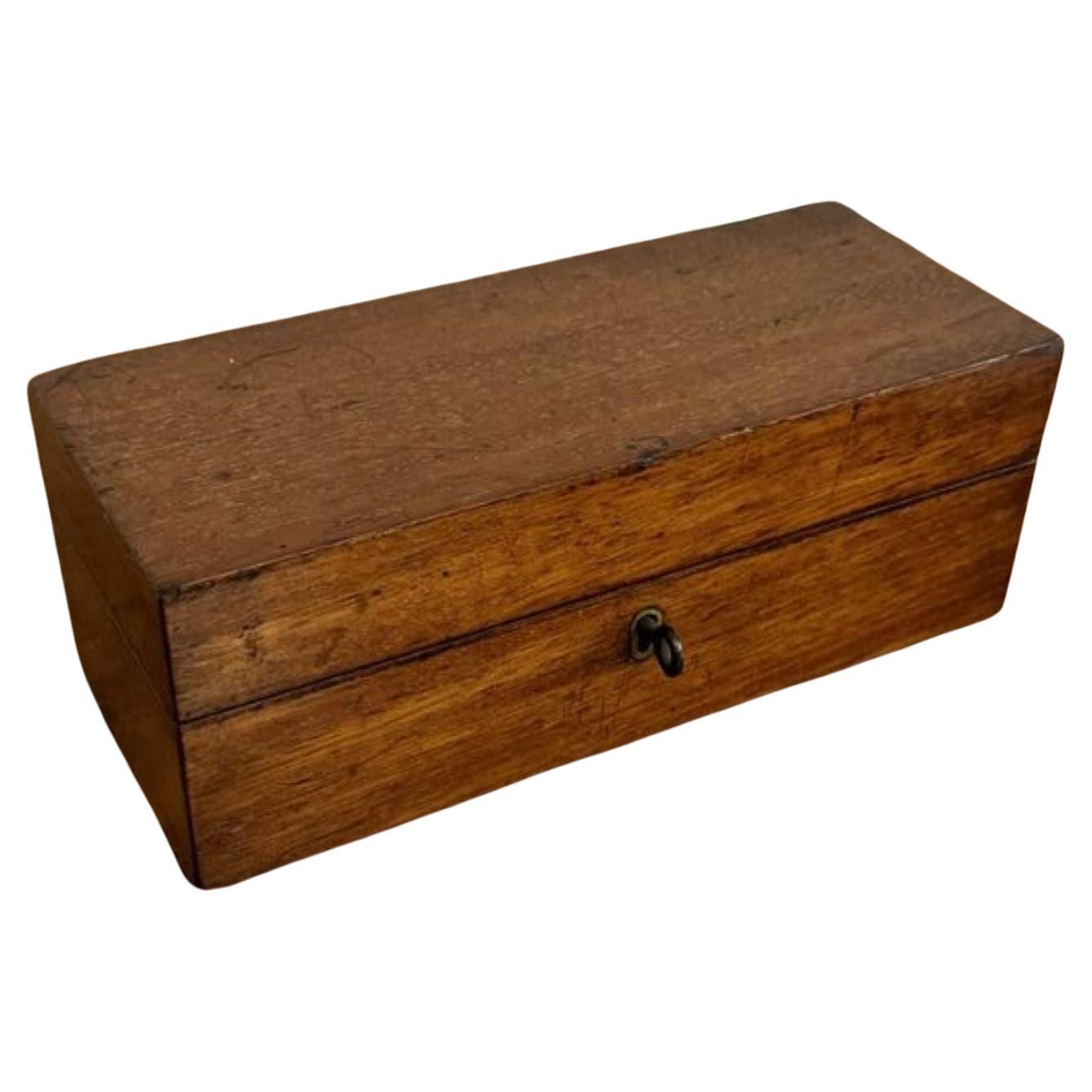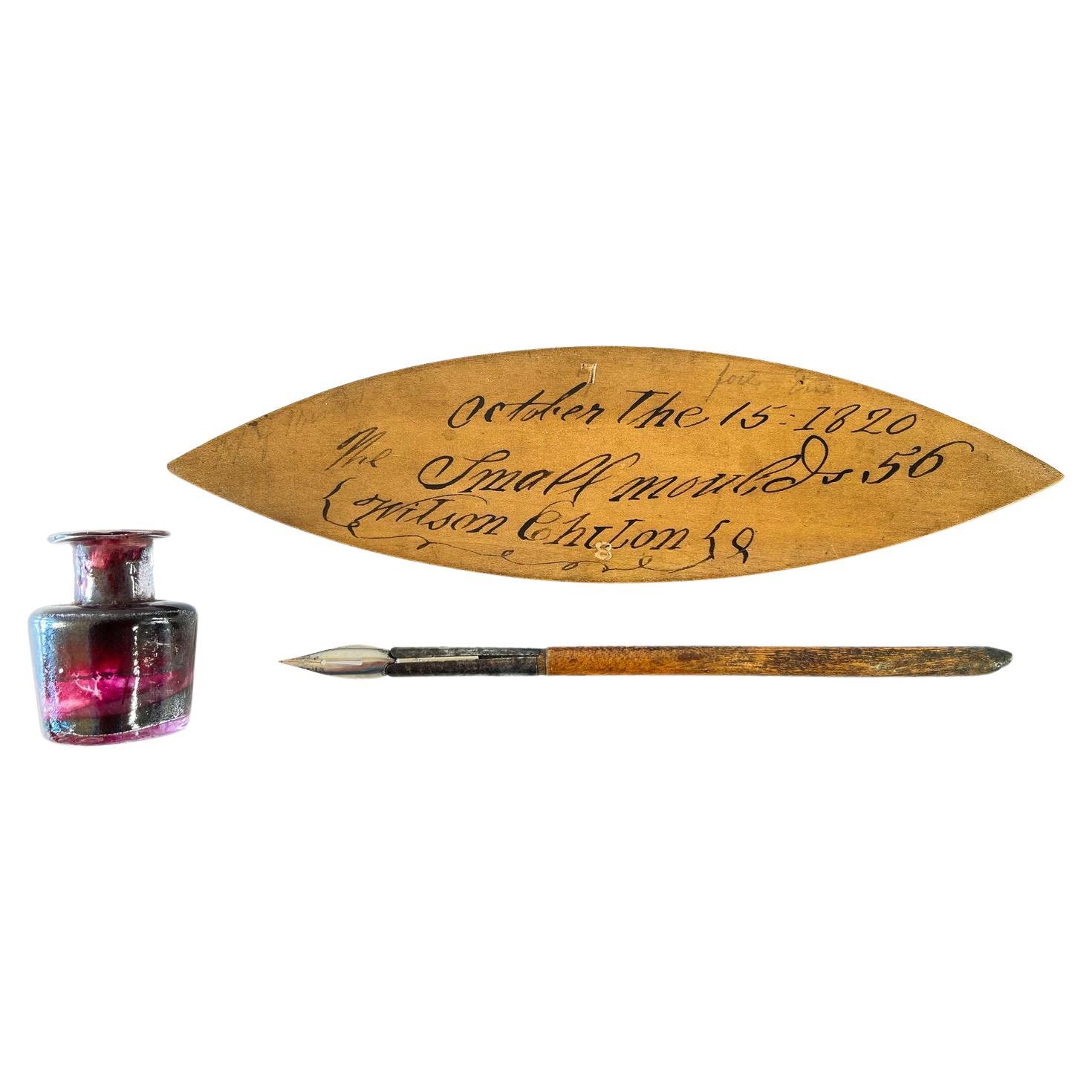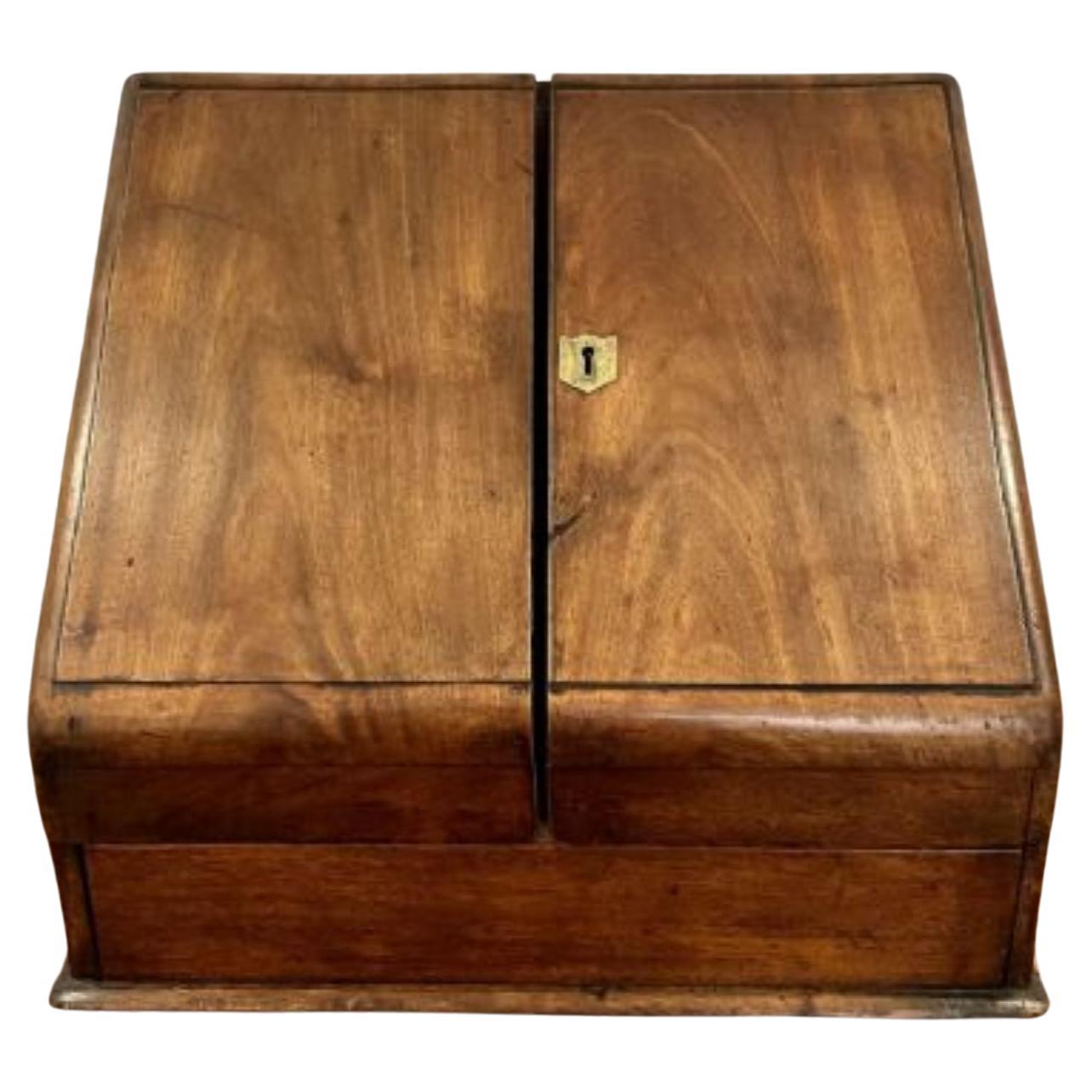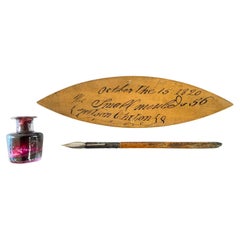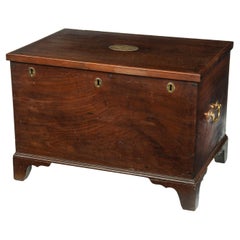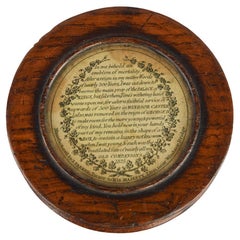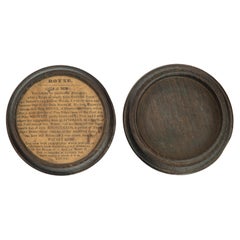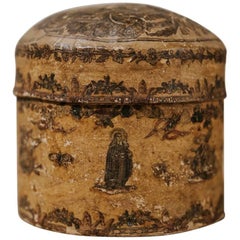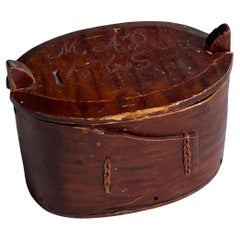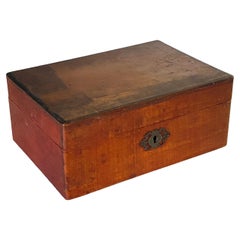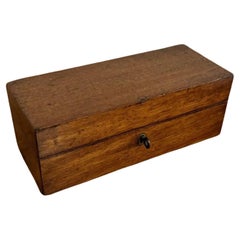Items Similar to Emma, Lady Hamilton’s ‘Orange Blossom’ Box for Her Wedding Flowers
Want more images or videos?
Request additional images or videos from the seller
1 of 6
Emma, Lady Hamilton’s ‘Orange Blossom’ Box for Her Wedding Flowers
$13,368.75
£9,750
€11,371.22
CA$18,306.39
A$20,354.22
CHF 10,627.85
MX$247,760.38
NOK 135,606.72
SEK 127,057.02
DKK 84,865.50
Shipping
Retrieving quote...The 1stDibs Promise:
Authenticity Guarantee,
Money-Back Guarantee,
24-Hour Cancellation
About the Item
This charming keepsake comprises an oval paper lined wooden box and lid, formally a pill or pantry box, held together with a pink ribbon, inscribed on the lid The Lady Hamilton’s Orange blossom. Lord Nelsons. Lady Hamilton. Given to me by my cousin Nellies husband, nee Nellie Harwood. Given to her by her cousin Sarah Woodrow. Alice M. Eastwood. In a domed glass case with later fabric wedding favors. With a letter of further provenance dated 1834 and three later wedding favors, circa 1840. English, circa 1795.
“7, Baronsmere Road. East Finchley. N.2. Oct 16th 1934.
“I know that the sprig of orange blossom, contained in a small oval glass domed case, in the possession of my cousin Sydney Harvey, to be a portion of that worn by Lady Hamilton, upon the occasion of her Marriage to Sir William Hamilton, at Marylebone Parish Church in 1791. A slightly larger portion, together with the rosette worn by the coach man, is in my possession, in the thin wooden box in which Lady Hamilton had preserved them. They came to us indirectly from our aunt, Mrs. William Harwood, nee Ann Woodrow, of Merton to whom they had been given by Sarah Woodrow, Mrs. Harwood’s niece, whose mother, also named Sarah Woodrow, had been made to Lady Hamilton, when she was living at Merton Place.”
This box reputedly contained the orange blossom worn by Emma Hart when she married Sir William Hamilton at St Marylebone Church, London on 6 September 1791. It was preserved by a servant called Sarah Troy, (1791-1859) who married Thomas Woodrow, a book Binder, in 1810. Thence by descent to her daughter Sarah Woodrow (born 1816) then to her cousin Eliza (Nellie) Harwood (nee Woodrow, born 1835) then, by 1934 to Alice Eastwood. Probably in Victorian times the original blossom was replaced by artificial flowers. We are indebted to Martyn Downer for his research into this piece.
- Dimensions:Height: 2.5 in (6.35 cm)Width: 7.25 in (18.42 cm)Depth: 5.75 in (14.61 cm)
- Materials and Techniques:
- Place of Origin:
- Period:1790-1799
- Date of Manufacture:circa 1795
- Condition:Wear consistent with age and use.
- Seller Location:Lymington, GB
- Reference Number:1stDibs: LU973024465292
About the Seller
5.0
Recognized Seller
These prestigious sellers are industry leaders and represent the highest echelon for item quality and design.
Established in 1982
1stDibs seller since 2013
132 sales on 1stDibs
Typical response time: 2 hours
Associations
LAPADA - The Association of Arts & Antiques Dealers
- ShippingRetrieving quote...Shipping from: Lymington, United Kingdom
- Return Policy
Authenticity Guarantee
In the unlikely event there’s an issue with an item’s authenticity, contact us within 1 year for a full refund. DetailsMoney-Back Guarantee
If your item is not as described, is damaged in transit, or does not arrive, contact us within 7 days for a full refund. Details24-Hour Cancellation
You have a 24-hour grace period in which to reconsider your purchase, with no questions asked.Vetted Professional Sellers
Our world-class sellers must adhere to strict standards for service and quality, maintaining the integrity of our listings.Price-Match Guarantee
If you find that a seller listed the same item for a lower price elsewhere, we’ll match it.Trusted Global Delivery
Our best-in-class carrier network provides specialized shipping options worldwide, including custom delivery.More From This Seller
View AllWilson Chilton’s mahogany Naval Architects/draughtsman box of curves/templates
By Gillows of Lancaster & London
Located in Lymington, Hampshire
Wilson Chilton’s mahogany Naval Architects/Naval draughtsman box of curves and templates, probably by Gillows still retaining around 100 superb quality...
Category
Antique 19th Century English Historical Memorabilia
Materials
Mahogany
A mahogany strong box made for the Ovenden Female Society, Instituted May 1809
Located in Lymington, Hampshire
A mahogany strong box made for the Ovenden Female Society, Instituted May 1809, of deep rectangular form with a hinged lid, three brass locks, brass carrying handles and an applied b...
Category
Antique Early 1800s English Decorative Boxes
Materials
Mahogany
A Rare and Historically Interesting George IV Period Snuff Box Made from Oak
Located in Lymington, Hampshire
This fine box is one of a small number of souvenir pieces of this kind made from timbers salvaged during the refurbishment of Windsor Castle in the 1820s. What makes this piece parti...
Category
Antique 19th Century English George IV Snuff Boxes and Tobacco Boxes
Materials
Oak
A black oak snuff box made from timber recovered from H.M.S. Boyne, sunk 1795, r
Located in Lymington, Hampshire
A black oak snuff box made from timber recovered from H.M.S. Boyne, sunk 1795, raised 1833, of circular form with turned lid and base, the lid with printed description of Boyne’s car...
Category
Antique 1830s English Nautical Objects
Materials
Oak
A relic from the family of Bounty Mutineer John Adams: documented piece of Bark
Located in Lymington, Hampshire
A relic from the family of Bounty Mutineer John Adams: An exceptionally rare documented piece of Bark Cloth from the Pitcairn Islands, with a fragment of paper pinned to it stating ‘Manufactured at Pitcairn’s Island, by the descendants of John Adams the Mutineer, from the bark of a tree.’
Provenance: Private collection, Hampshire
For similar examples see the collection of the British Museum (Oc1937,0308.1 and Oc1937,0308.2) each with the same handwriting as the example offered here, but signed ‘H. Porter’ and dated 1837 and another in the National Martime Museum, Greenwich.
John Adams (1767-1829)
John Adams (known as Alexander Smith) was the last survivor of the Bounty Mutineers, the disaffected crewmen, who, led by acting-Lieutenant Fletcher Christian, seized control of the ship from their captain, Lieutenant William Bligh, and set him and eighteen loyalists adrift in the ship’s open launch.
After a sojourn in Tahiti, Christian, the remaining mutineers and some native Tahitians, mainly women forcibly abducted, left on 22nd September 1799 in search of safe haven. He then formed the idea of settling on Pitcairn Island, far to the east of Tahiti; the island had been reported in 1767, but its exact location was never verified. After months of searching, Christian rediscovered the island on 15 January 1790, 188 nautical miles east of its recorded position. This longitudinal error contributed to the mutineers’ decision to settle on Pitcairn in the hope they would be undetected. On arrival the Bounty was unloaded and stripped of most of its masts and spars, for use on the island. It was set ablaze and destroyed on 23rd January 1790.
Although the settlers were able to survive by farming and fishing, the initial period of settlement was marked by serious tensions among the settlers. Alcoholism, murder, disease and other ills had taken the lives of most of the mutineers and Tahitian men. John Adams, Ned Young, and Matthew Quintal were the last three mutineers surviving in 1799 when the thuggish Quintal, while drunk, reportedly threatened to kill the entire community if he could not have Fletcher Christian’s widow as his own consort, and in response Adams and Young lured him to Young’s house and killed him with a hatchet. Having taken effective control of the 19-member strong colony after the 1793 massacre, Adams and Young then turned to the Scriptures using the ship’s Bible as their guide for a new and peaceful society. As a result, Adams and Young embraced Christianity and taught the children to read and write using the Bible. Young eventually died of an asthmatic infection in 1800, but Adams continued his work of educating the women and children. The Pitcairners also converted to Christianity. The Pitcairners would later convert from their existing form of Christianity to Adventism after a successful Adventist mission in the 1890s.
The American sailing ship Topaz was the first to rediscover Pitcairn in 1808. Adams was eventually granted amnesty for the mutiny...
Category
Antique 19th Century British Historical Memorabilia
Materials
Paper
A harewood marquetry tea caddy with Royal Provenance
Located in Lymington, Hampshire
A harewood marquetry tea caddy with Royal Provenance, of oval form with a hinged lid opening to reveal two zinc lined compartments, decorated in fruitwood and boxwood marquetry with ...
Category
Antique 1790s English Tea Caddies
Materials
Hardwood
You May Also Like
18th Century Arte Povera Venetian Chalk Box
Located in Brecht, BE
Another beauty, made in Venice, these precious arte povera chalk boxes were made for the lucky few, can be yours now.
Category
Antique Mid-18th Century Decorative Boxes
Materials
Paper
Antique Swedish Wooden storage box 1865 Handmade Folk Craft
Located in Forest, BE
Swedish antique pine and birch wooden storage box. . Fine quality of bentwood. It is a true piece from the 19 century. Initials are hand painted on the top 1865 and hand engraved und...
Category
Antique Early 19th Century Swedish Folk Art Decorative Boxes
Materials
Birch, Pine
$527 Sale Price
20% Off
Victorian Decorative or Jewelry Box, in Wood, England, 19th Century
Located in Auribeau sur Siagne, FR
This box is a jewelry box or a decorative box. It was made in the 19th century, in England, Victorian Period. Its lid is made in wood, brown in color.
Category
Antique 19th Century English Victorian Decorative Boxes
Materials
Metal
$239 Sale Price
20% Off
Lovely antique Victorian mahogany trinket box
Located in Ipswich, GB
Lovely antique Victorian mahogany trinket box, having a lift up lid opening to reveal a storage compartment lined with a green felt interior.
D....
Category
Antique Early 19th Century Early Victorian Decorative Boxes
Materials
Mahogany
Antique Victorian quality mahogany stationary box
Located in Ipswich, GB
Antique Victorian quality mahogany stationary box having a sloping front and a pair of mahogany doors opening to reveal a fitted interior, set ...
Category
Antique Early 19th Century Victorian Decorative Boxes
Materials
Mahogany
French Mid-19th Century Leather and Gilt Decorated Jewelry Box
Located in Atlanta, GA
Having a slightly domed top with gilt decorated banding above a conforming case with a brass escutcheon.
Category
Antique 19th Century French Louis Philippe Jewelry Boxes
More Ways To Browse
Orange Blossom
Antique Furniture Hamilton Furniture
Pill Case
Antique Wooden Rosettes
Church Box
Used Office Furniture Sydney
Lord Nelson
Victorian Coach
Antique Pill Case
Pantry Box
Antique Pantry Box
Victorian Pill Box
Thomas Merton
Lady Emma Hamilton
Vintage Yacht Furniture
Large Brass Nautical
Nautical Antique Plates
Mahogany Boat
